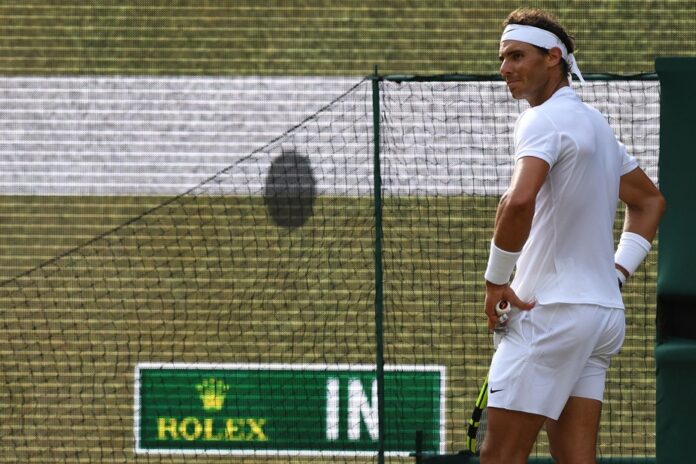(London) If artificial intelligence arrives in force this year on the lawn of Wimbledon, the line judges are not intended to be replaced. At least, for now.
Ahead of the tournament (July 3-16), the All England Club and tech giant IBM on Wednesday unveiled the new technologies that will be used during the competition.
One, an artificial intelligence, will commentate match highlights on the official Wimbledon website and mobile app. The other will use AI to determine – and update over the rounds – the difficulty of the course awaiting each player engaged in singles until a possible final.
Each year, this essential London meeting of world tennis attracts several thousand spectators, all fans of the strawberries with cream served there, the Pimm’s that are sipped there, or the all-white outfits worn by the players and players.
“Wimbledon is the oldest of the Grand Slam tournaments. Our traditions date back to 1877, and that’s one of the main reasons people continue to attend,” said Bill Jinks, Chief Technology Officer of the prestigious London tournament.
“But without technological innovation, we couldn’t have stayed at the top of tennis,” he said.
While the Australian Open and the United States Open, among others, have already generalized the use of electronic refereeing since 2021, the men’s ATP circuit announced in April that its traditional linesmen, posted on the grounds , would also be replaced from 2025, in order to “optimize precision and consistency (of refereeing, editor’s note) between tournaments”.
This season, at Wimbledon, Bill Jinks promises that the latter will still be present, but he is unable to say if this will always be the case in the future.
“The technology for line umpiring is evolving. Since 2007, we have been using the Hawk Eye verification system (video that players can request a limited number of times, editor’s note), and it works well. Who knows what the future will hold? “, he warns, excluding however the possibility that an artificial intelligence will become the sole arbiter of the parties.
For Chris Clements, digital manager at the All England Club, the advancement of technologies has changed the way society consumes sport, while today it is in full swing around AI since the release of tools such as ChatGPT, the editorial content generator from the Californian company OpenAI, or Midjourney, image creation software.
“Wimbledon, when we were kids, was when the whole family would gather in front of the living room TV,” he recalls. “Now it’s less common. We have to find another way to attract those who will embody the next generation of Wimbledon fans. »
Now, that includes “harvesting massive amounts of data and turning it into insights that we can share with fans around the world through our digital platforms,” says Kevin Farrar, head of sports partnerships for IBM UK and Ireland.
The objective, he continues, is then to use this AI (which produces sports commentary) on the entirety of a match, for the categories which do not usually benefit from it, namely veterans, juniors or wheelchair tennis. Without completely ignoring human intervention, he says.
“Replacing John McEnroe’s comments is impossible!” “, he says of the former world number one turned television commentator. “The human, he continues, must always be present, it is simply a question of complementing it. The challenge is to find the right balance between tradition and innovation. »















